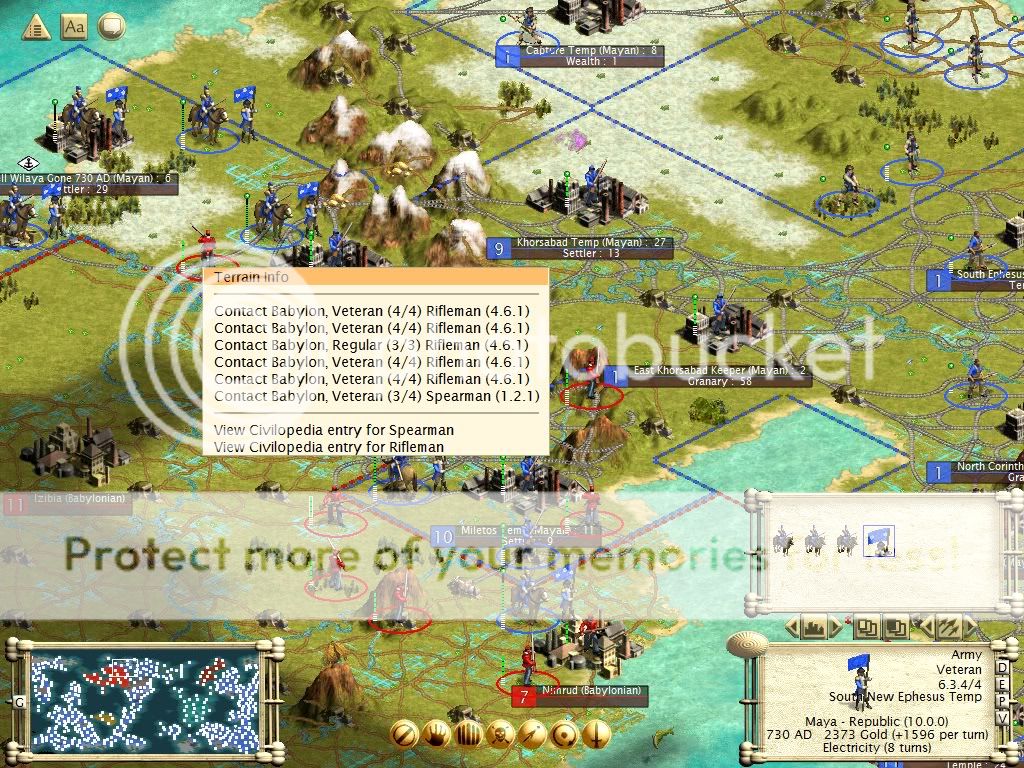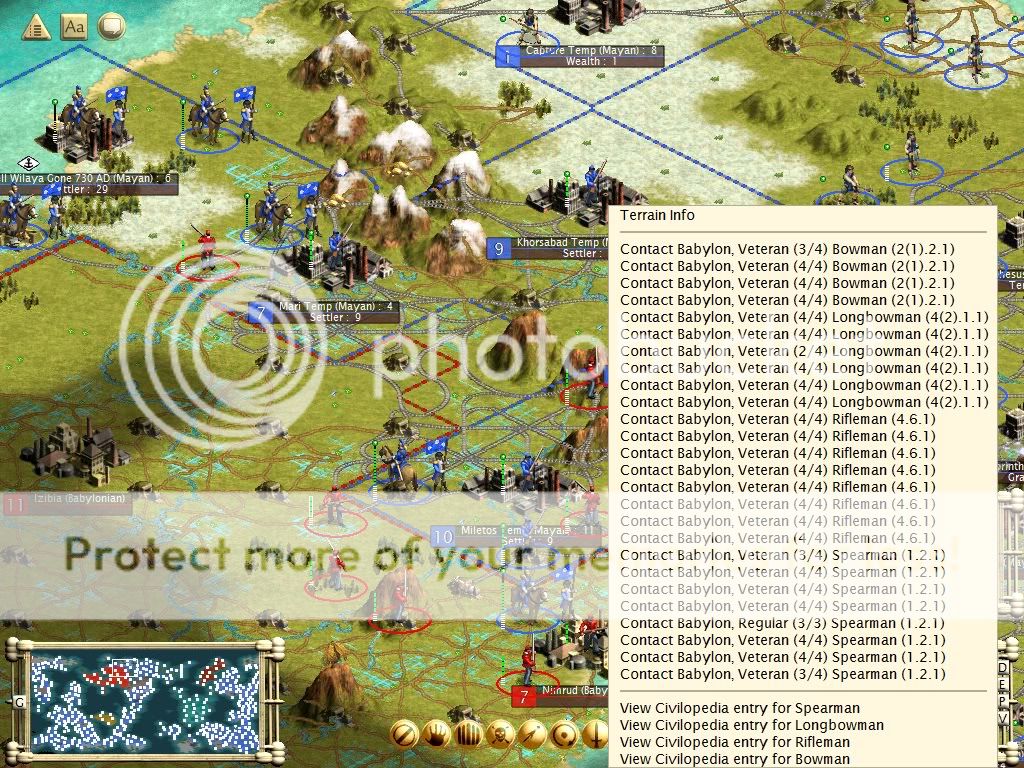I've never done one of these high-level Huge maps, so this is quite interesting. Thanks for giving us all the detail.
Question: For countering those huge (but not full of the most modern units) stacks, as in #238, how much of an attacking force do you need?
It all depends on how you want to counter it. Which option works out best will depend on the situation. I know of at least three options:
1. Surround it with 8 medium healthy (7 or 8 hp at least, I don't think 6 hp will work) 3 defense unit armies, or as many as you need so that it can't move anywhere to attack one of your cities ever. In other words, surround it with 3 defense unit armies (with at least 3 units in each army). This, of course, assumes that you don't have any cities directly adjacent to such a stack. Once you have Replaceable Parts you can also surround it with 8 veteran infantry
in fortress with an artillery proper unit also. See
post 67 of this thread for an example. Then you don't need to attack it... you can just watch it "poof" away when you destroy that AI, or you can come back to it later and slowly take it out. The 1000 AD save
here can also provide you with another example.
You can also partially block off such stacks. Here with the stack in the first post of
237, I didn't attack it at all. I just put 3 armies at the 3 squares between it and Sparta so that the stack couldn't move directly adjacent to Sparta the next turn. So, the units then wouldn't go near Sparta, they went somewhere else. Happily, since I had signed an RoP with Babylon so I could attack Greek cities, they ended up attacking that stack and wearing it down a little for me.
2. With such a stack parked next to a city you want to keep, you can attack it a little, or as much as you can, for several turns. You first attack the stack as much as you can/as much as feels appropriate. Then you gift that city to some other AI you have a military alliance against the AI has the stack. E. G. say you fight a large Persian stack, and you have a military alliance with Germany against Persia. Then after you attack that stack, you gift that city to Germany. Persia will then capture that city from Germany, or possibly raze it. If Persia captures it, you retake it next turn, and keep working on that stack, and possibly even re-gift that city to Germany again, and again as needed.
Hopefully, you have at least one army around to defend artillery type units, which you accordingly use to help wear down the stack also. See posts
139,
147,
148, and
149 of this thread. I gifted Theveste in 250, 260, 270, and 280 there, as I couldn't finish off that stack until 290 AD, though fortunately it had divided several times.
It does come as at least conceivable to do this with two cities also if needed. If the stack has only 1 movement units, the gifting/retaking process could conceivably go on for quite a while, as the AIs don't generally seem leave all too many units in a city, and you don't need to defend other nearby cities. If the stack does have fast units, you might need some defense for border cities.
3. You try and funnel such units around, slowly taking them out as needed/desired, e. g. Bamspeedy's "
army walls", or using veteran infantry with an artillery proper in a fortress similarly. The last screenshot of
225 almost shows what I'd consider a good funnel, but you'll also want a strong enough army on the volcano square (which I did end up placing there before the end of the turn).
I'll add that one could also probably call this a "Funnel of Doom", but Bamspeedy's notes predate SirPleb writing about using a "Funnel of Doom", so "Army Wall of Doom" seems more appropriate. Also, Bamspeedy has, I think, an instructive point about AI offensive and defensive units. Splitting AI units up that way might enable to kill more units earlier, since offensive units generally have a lower defense number than defensive units. Thus, you might get more armies earlier that way.
For tactic 2, you basically need enough offensive units to keep on attacking the (split) stack and take any city that the AI captures. One army will certainly help to protect your artillery type units. Others could help block off certain spots.
For the other tactics you'll need several armies... so long as the AIs don't have tanks, bombers, or all too many frigates nearby.












